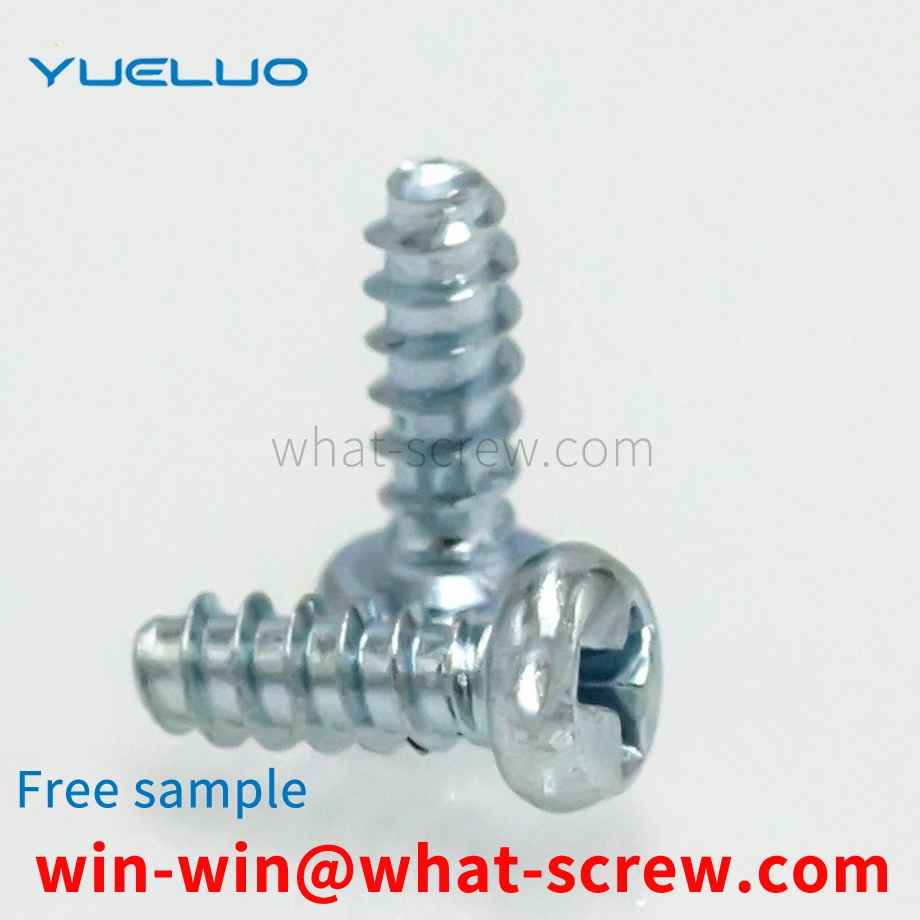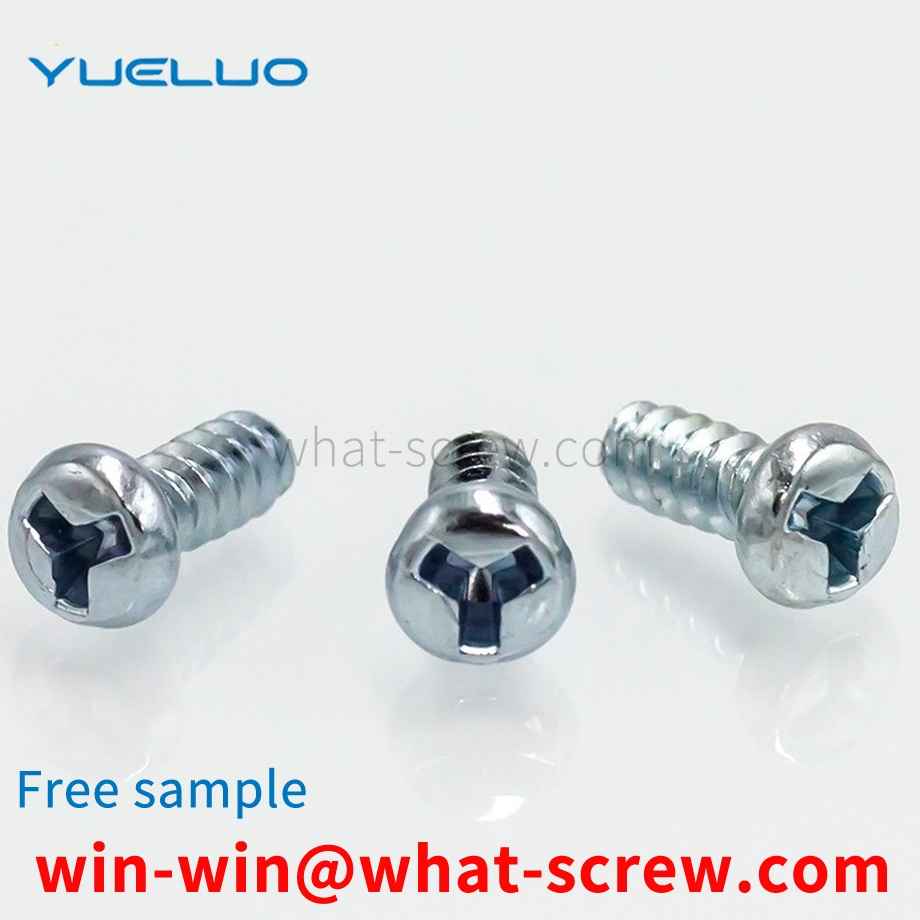The structure of Guangdong Yueluo Hardware Industry Co., Ltd. is as follows. Figure 1 is a schematic diagram of the structure of the existing pin shaft stop mode of a general excavator. Figure 2 is a schematic structural diagram of the pin shaft stop used by Guangdong Yueluo Hardware Industry Co., Ltd. for applying the bolt of Guangdong Yueluo Hardware Industry Co., Ltd. Fig. 3 is the left side view according to Fig. 2 of the bolt used for pin stop by Guangdong Yueluo Hardware Industry Co., Ltd. Fig. 4 is the front view of Guangdong Yueluo Hardware Industrial Co., Ltd., which is used for the pin shaft stopper to insert the pin into the pin and form the pin of the pin structure. Fig. 5 is the left side view of Guangdong Yueluo Hardware Industry Co., Ltd., which is used for the pin shaft stopper to insert the pin into the pin and form the pin of the pin structure. Fig. 6 is a front view of the bayonet of the latch used for pin stop by Guangdong Yueluo Hardware Industry Co., Ltd. Fig. 7 is a top view of a bayonet of a latch used for pin stop by Guangdong Yueluo Hardware Industry Co., Ltd. Fig. 8 is the front view of the circlip of the latch used by Guangdong Yueluo Hardware Industry Co., Ltd. for pin stop. [0017] FIG. 9 is a top view of the circlip of the bolt that Guangdong Yueluo Hardware Industrial Co., Ltd. is used for pin-stopping. In Figures 1 to 9, the latch (1), the retaining sleeve (2), the pin shaft (3), the bayonet (4), the circlip (5), the misaligned through hole (6), and the misaligned end head (7).
The screw refers to the screw (foreign name: Screw), which is a tool that uses the physical and mathematical principles of the oblique circular rotation of the object and the frictional force to gradually fasten the utensils and parts. A screw is a common term for fasteners, an everyday colloquial language. Metric threads are measured in MM (millimeters) and have a cusp angle of 60 degrees. Both US and Imperial threads are measured in inches. The cusp angle of the American thread is also 60 degrees, while the cusp angle of the imperial thread is 55 degrees.
Although this structure can prevent the shaft from rotating radially to a certain extent, it also has some obvious defects: firstly, the positioning block needs to be opened during processing, and secondly, the opening of the positioning block needs to be opened. After the deformation, the contact between the positioning block and the shaft becomes line-to-line contact, so that the contact area between the positioning block and the shaft is reduced, and the force generated to overcome the radial rotation of the shaft is correspondingly changed. less, so there is a risk that the shaft can turn radially.
Rivets are a commonly used fixing structure, but because rivets need to be deformed by pressure during use, it is easy to cause structural changes inside the metal, which will shorten the service life.
Stainless steel screws are classified into austenitic stainless steel, ferritic stainless steel, martensitic stainless steel, and precipitation hardening stainless steel. The selection of stainless steel screws is also based on principles. Where to start, let you choose the stainless steel screws you need. After comprehensive and comprehensive consideration of these five aspects, the grades, varieties, specifications and material standards of stainless steel screws are finally determined. Austenitic stainless steel: the most basic alloying elements of austenitic stainless steel are chromium and nickel. The grade is a chromium-nickel austenitic stainless steel with a chromium content of about 18% and a nickel content of about 8%, often called 18-8 stainless steel. The element ratio of chromium and nickel basically ensures that the structure of the steel is stable austenitic ferritic stainless steel: 430 type ordinary chromium steel, its corrosion resistance and heat resistance are better than 410 type, magnetic, but it It cannot be strengthened by heat treatment, and is suitable for stainless steel screws with slightly higher corrosion resistance and heat resistance and general strength requirements. Martensitic stainless steel: Type 410 and 416 can be strengthened by heat treatment, with a hardness of 35 to 45HRC, and good machinability. They are used for general-purpose heat-resistant and corrosion-resistant stainless steel screws. Type 416 has a slightly higher sulfur content and is a free-cutting stainless steel. Type 420, sulfur content? R0.15%, improved mechanical properties, can be strengthened by heat treatment, maximum hardness value of 53 ~ 58HRC, used for stainless steel screws requiring higher strength. Precipitation hardening stainless steel: 17-4PH, PH15-7Mo, they can get higher strength than the usual 18-8 type stainless steel, so they are used for high-strength, corrosion-resistant stainless steel stainless steel screws. A-286, a non-standard stainless steel, has higher corrosion resistance than commonly used Type 18-8 stainless steels, as well as good mechanical properties at elevated temperatures. Used as high-strength, heat-resistant, corrosion-resistant stainless steel screws, can be used to 650 ~ 700 ℃. Austenitic stainless steel: The commonly used models are 302, 303, 304, and 305, which are the so-called 18-8 austenitic stainless steels. Both corrosion resistance and mechanical properties are similar. The starting point of selection is the production process method of stainless steel screws, and the method depends on the size and shape of stainless steel screws, and also depends on the quantity of production. Type 302 is used for machined screws and self-tapping bolts. Type 303 In order to improve machinability, Type 303 stainless steel is added with a small amount of sulfur and is used to machine nuts from bar stock. Type 304 is suitable for hot heading stainless steel screws, such as longer gauge bolts, large diameter bolts, which may be beyond the scope of the cold heading process. Type 305 is suitable for cold heading processing of stainless steel screws, such as cold formed nuts, hex bolts. Type 309 and Type 310, their Cr content and Ni content are higher than 18-8 type stainless steel, suitable for stainless steel screws working at high temperature. Types 316 and 317, both of which contain the alloying element Mo, have higher high temperature strength and corrosion resistance than 18-8 type stainless steel. Type 321 and Type 347, Type 321 contains a relatively stable alloying element Ti, Type 347 contains Nb, which improves the intergranular corrosion resistance of the material. It is suitable for stainless steel standard parts that are not annealed after welding or serve at 420~1013℃.
We have many years of experience in the production and sales of screws, nuts, flat washers, etc. The main products are: stamping self-locking nuts, sets of complete hexagon bolts and nuts, full thread threaded bolts, isolation column copper nuts and other products, we can provide you with suitable products. Your fastener solution.



















 Service Hotline
Service Hotline




